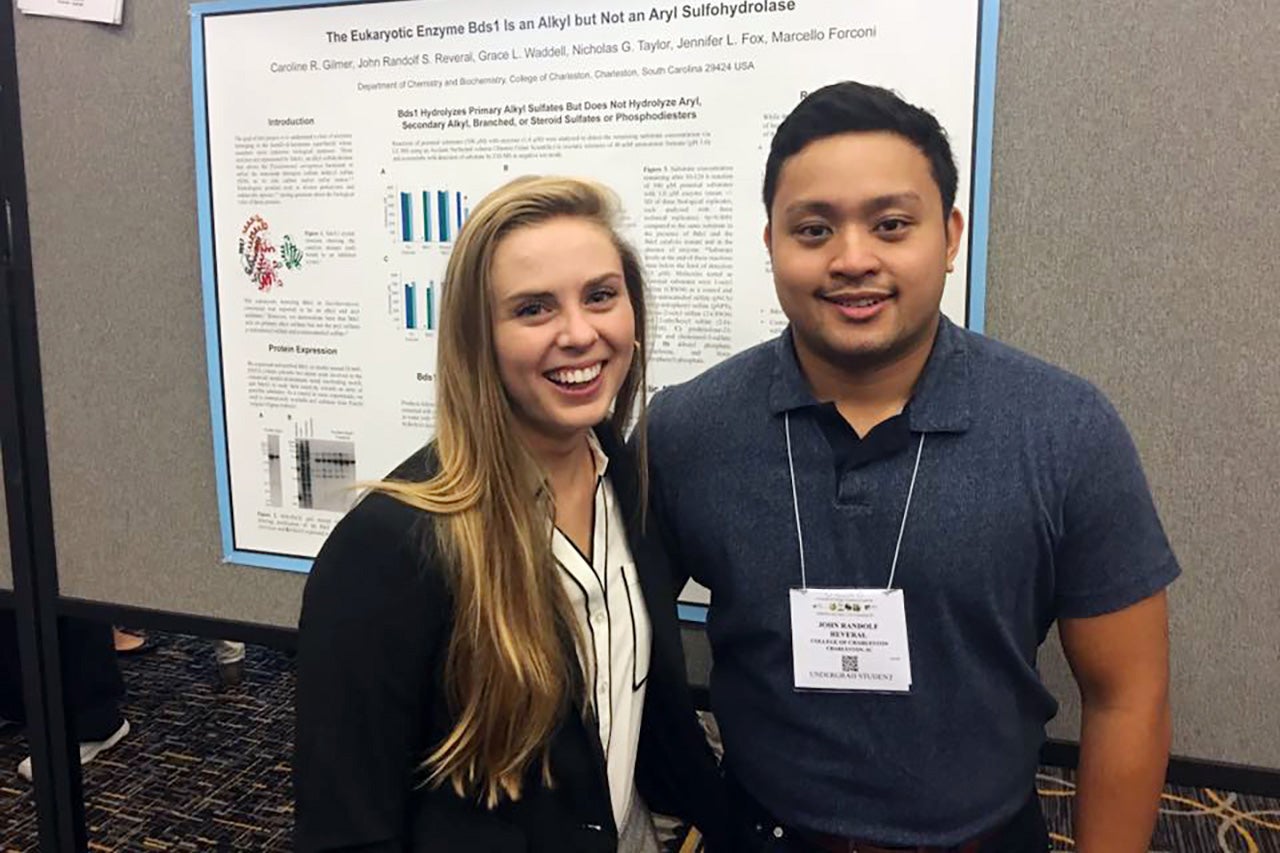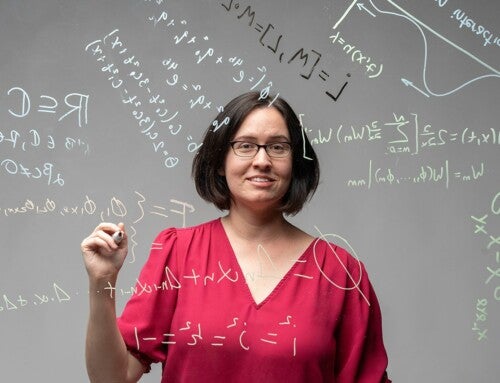The latest advances in chemistry from the brightest minds in the Southeast. That’s what a group of budding Cougars scientists got to experience last week when they attended the Southeast Regional Meeting of the American Chemical Society (SERMACS).
The Department of Chemistry and Biochemistry sent a contingent of 28 students and nine faculty to the annual meeting held Nov. 7-11, 2017, in Charlotte. A total of 56 authors from the College submitted 34 research presentations for the event ranging from nanoparticle research to understanding how mitochondrial enzymes assemble. With nearly 157,000 members, the American Chemical Society is the world’s largest scientific society and a leading source of authoritative scientific information.

Student Marni Sapolsky presented her research at the Southeast Regional Meeting of the American Chemical Society.
Students who attended the conference include: Mason Huebsch, John Reveral, Jonathan Derryberry, Wilson Ford, Patrick Gross, Bach Nguyen, Michael Hollerbach, Cameron Twitty, Dashiell Jay, Dario Linkalore, Ted Carrigan-Broda, Rachel Simoneaux, Haleigh Ferro, Caroline Gilmer, Cortney Gensemer, Vicky Bailey, Erin Day, Penny Huebsch, Sondrica Goines, Heather Lieb, Celia Hamill, Alyssa Johnson, Marni Sapolsky, Virginia James, Alex Schwartz, Cecilia Hendy, Katie Kraichely and Catherine Dadmun.
Chemistry faculty who attended include: Dave Boucher, Jennifer Fox, Marcello Forconi, Kate Mullaugh, Neal Tonks, Kristin Krantzman, Mike Giuliano, Jay Forsythe and Rich Lavrich.
“The SERMACS meeting typically hosts close to 2,000 attendees,” says Pamela Riggs-Gelasco, professor and chair of the Department of Chemistry and Biochemistry. “There is an undergraduate session which is a great forum for our students to present their work to a professional audience.”
The experience, says Riggs-Gelasco, offers many benefits to students, including opportunities to meet with representatives from graduate schools, developing their presentation skills and sharpening their ability to defend their data and scientific conclusions, and gaining exposure to different areas of chemistry and research through talks and presentations.
“Attending a professional meeting allows students to see the full process of science, which includes sharing and defending ideas – essential skills for any scientist,” Riggs-Gelasco says. “Our students came back energized with new ideas to try in the lab.”
Featured image: Students John Reveral and Caroline Gilmer presented their research at the Southeast Regional Meeting of the American Chemical Society.




